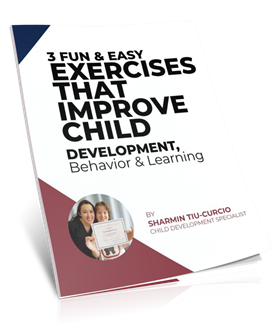
Do our emotions have complete authority over us, or can we have a say in how we relay them? In part one, I said the following: adults will face challenges with the complexities of their feelings. However, children are likely to have it worse.
Because we’ll all experience a wide range of emotions, children will not completely understand what they’re feeling. Regardless of setting, this confusion can lead to children facing communication challenges.
However, just because something is difficult, this doesn’t mean impossible. For this reason, I believe that we can play a role in relaying our emotions.
As promised in part one, I’ll now present two ways to help your children manage their feelings.
Tip #1: Silence isn’t golden
This is the original saying: silence is golden. As for the meaning, it’s sometimes best to remain silent than it is to speak. However, if the aim is to help your children with their emotions, silence is your enemy.
Try this instead: connect an experience or action to a particular emotion. For instance, imagine yourself smiling while eating your favorite ice cream.
Instead of letting a teachable moment pass, say this: because it brings back childhood memories playing with friends, eating this makes me feel nostalgic.
At the opposite end of this emotion, picture your reaction after seeing the poor treatment of a restaurant server. “While daddy was having lunch today, someone treated the waiter so badly, I felt disgusted. Under no circumstances should you ever treat someone as inferior to you.”
Whenever we attach an experience or action to an emotion such as disgust or nostalgia, children gain clarity. From your examples, it’s like painting a portrait with the title of a specific emotion. Because of this, they’ll learn that there are many different emotions. From here, they’ll also learn how to distinguish them.
Tip #2: A picture equals one thousand words
Famously coined from Henrik Ipsen’s original quote, he said, “A thousand words leave not the same deep impression as does a single deed.”
To continue my painting analogy, use an image to drive the emotional point home. Here’s a chance to get creative. How? Using cartoon and even real-life images, cut-out or print said images. If not flash cards, consider creating a large poster comprised of the 27 emotions.
For the purpose of today’s blog, place the images on a flash card. With each reveal, have your child say what emotion is on display.
In 2015, Pixar released an animated movie titled Inside Out based on five emotions. In particular, Joy’s objective is to keep the main character happy. With Joy’s image on a flash card, your child will now see a representation of the emotion.
So, although I can offer enough tips to fill a book, these two tips share a commonality: children need active involvement. As adults, we don’t become who we are overnight. By that, life is a lengthy process. When we’re hands-off or impatient with life’s process, disaster ensues.
Before children can manage their emotions, they must first learn about their emotions. By understanding what they are, they’ll recognize what emotion is appropriate. With this information, they’ll better comprehend how to express themselves.
As for you, you’ll realize that through the process, it’s possible to mitigate their meltdowns. In instances, you may even find that your child has challenges sitting still, appears apprehensive, uncoordinated, and struggles with paying attention.
Sometimes, what drives this is the following: a sensory processing issue. While experiencing this as a parent, you may feel overwhelmed, but that’s where I come in.
At Occupational Therapy Concept, You’re Family. For a Free consultation, give me a call at (718) 285-0884 if your child needs further evaluation and help.



